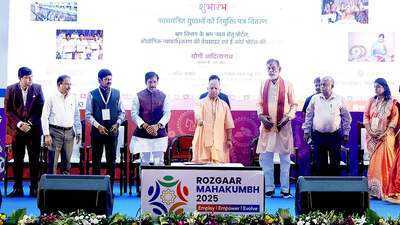Why Hindu Babies Were Sometimes Buried Instead of Cremated (The Untold Reason)
My Life XP | August 26, 2025 1:39 AM CST

When we think of Hindu funerals, the image of a burning pyre by the river instantly comes to mind. The fire, rising into the sky, carrying the soul forward. But not many know that not everyone was given to the flames. Especially babies. Some were buried gently in the earth, a ritual most people today have forgotten.
Cremation: The Rule in Hinduism
 For adults, cremation is the norm in Hinduism. The fire is not just a way to dispose of the body. It is symbolic.
For adults, cremation is the norm in Hinduism. The fire is not just a way to dispose of the body. It is symbolic.
- Fire purifies.
- Fire releases the soul from the body.
- Fire ensures the quick journey of the spirit.
Why Babies Were Buried Instead of Cremated
 The answer lies in how Hinduism viewed life, death, and innocence.
The answer lies in how Hinduism viewed life, death, and innocence.
- Purity of the Soul - Babies were considered untouched by karma. They had not lived long enough to commit sins or create worldly attachments. In Hindu thought, the purpose of fire was to burn away impurities. But a baby’s soul was already pure. So the fire was unnecessary.
- The Harshness of Fire - Many believed it was too cruel to expose such a tender, innocent body to flames. Burial, on the other hand, felt gentle, like laying the child back into the arms of Mother Earth.
- Return to Nature - Hindu philosophy often speaks of returning to the elements: earth, water, fire, air, and space. While adults returned through fire, babies were often given back to the earth directly. It was seen as a softer passage, a natural cycle.
- Astrological and Spiritual Beliefs - Some communities believed that children who died very young had souls meant to return quickly in another body. Burial kept the transition quiet, without the dramatic burning of fire.
Regional Variations
 Not every Hindu family followed this. Customs varied across regions and castes. For example:
Not every Hindu family followed this. Customs varied across regions and castes. For example:
- In some parts of South India, children under a certain age were always buried.
- In North India, a mix of burial and water immersion rituals existed.
- Tribal and rural Hindu communities often had gentler, earth-based traditions.
The Emotional Side of the Ritual
 Beyond philosophy, let’s talk about the heart. Imagine parents losing a child. The grief is unbearable. For many, the act of burial felt more like tucking the baby in, rather than burning them. It gave space for a quieter goodbye.
Beyond philosophy, let’s talk about the heart. Imagine parents losing a child. The grief is unbearable. For many, the act of burial felt more like tucking the baby in, rather than burning them. It gave space for a quieter goodbye.
Cremation is fiery, loud, final. Burial is soft, slow, almost motherly. And perhaps that is why so many families preferred it for their infants.
Why the Ritual Faded Over TimeAs cities grew, as uniform practices became the norm, this custom slowly faded. Today, very few families even know about it. Modern cremation grounds do not allow exceptions. Traditions that were once fluid have become stricter, sometimes out of convenience.
But knowing this part of history tells us something valuable: that rituals are not just about religion. They are about emotions, about how humans have always tried to soften the hardest moments in life.
A Forgotten LessonWhen I think back to my grandmother’s words, I realize she wasn’t talking about rituals only. She was talking about compassion. About how even in death, people tried to hold on to gentleness.
The burial of babies in Hinduism is not just a lost custom. It is a reminder that sometimes rituals bend, not out of rule-breaking, but out of love. And maybe that is the real untold reason.
Unlock insightful tips and inspiration on personal growth, productivity, and well-being. Stay motivated and updated with the latest at My Life XP.
Frequently Asked Questions:
Yes, some communities followed that practice.
It’s more cultural than strictly scriptural.
READ NEXT
-
Debutants Oman announce squad for upcoming Asia Cup

-
Daily Horoscope - August 27, 2025 (For All Zodiac Signs Today)

-
UP CM Yogi Adityanath Inaugurates Integrated Monitoring System For Atal Residential Schools

-
Murder probe launched after pensioner, 87, found strangled to death

-
UP Govt Empowers Women Through Surya Sakhi Program In Solar Projects
